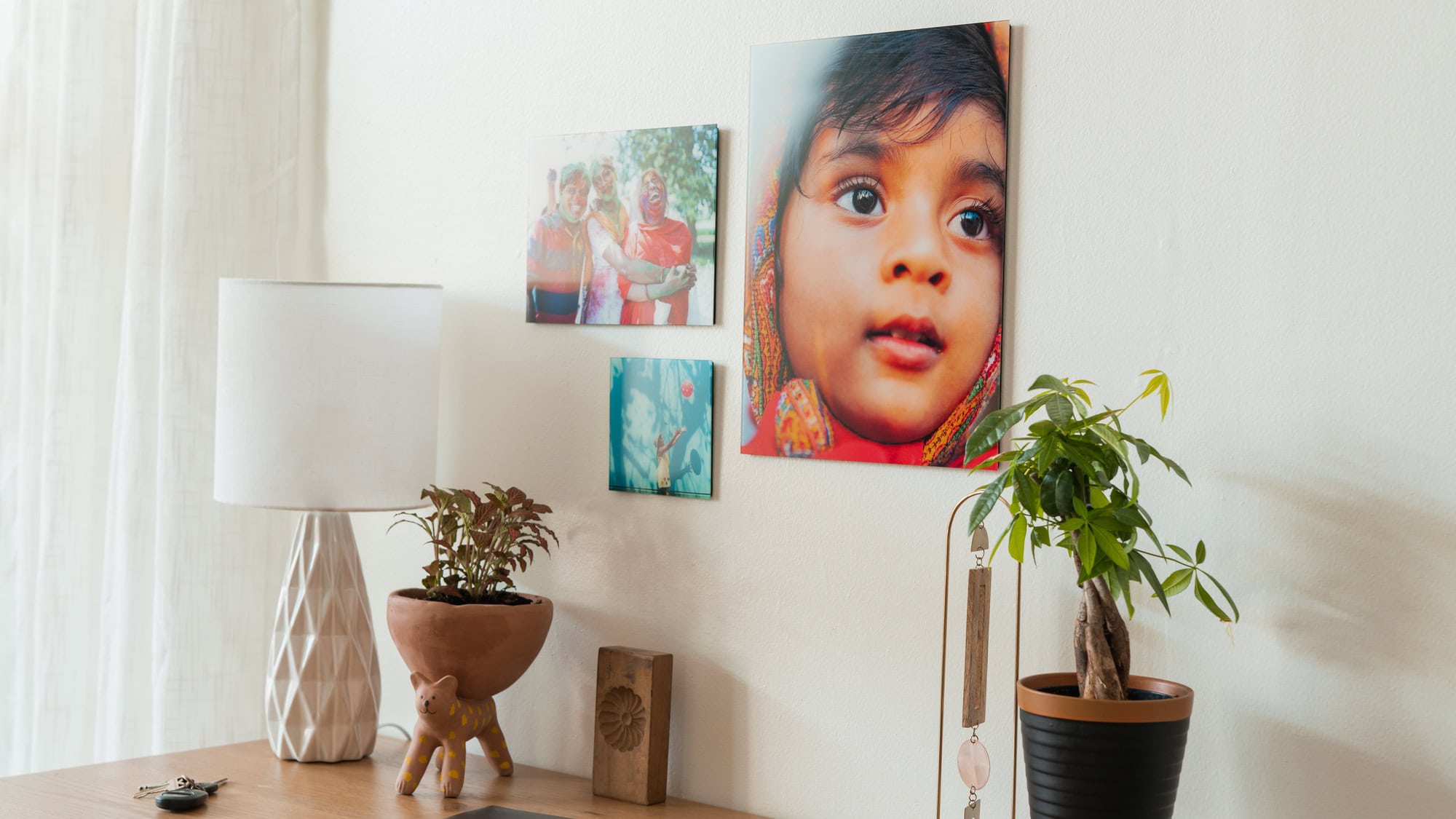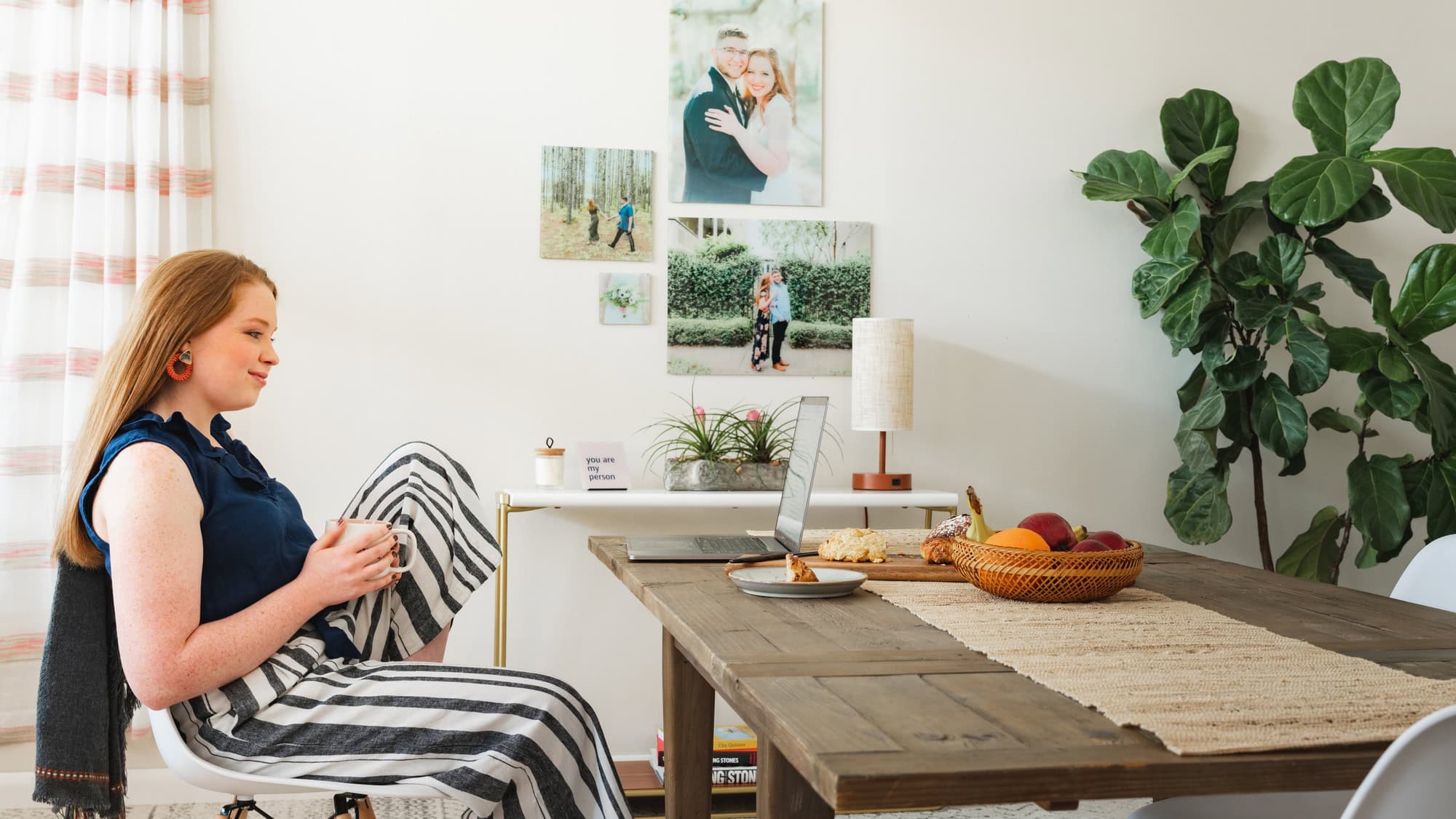Remembering your childhood home conjures up images of family portraits hanging all around, down to what Dad wore that Christmas on the ski trip.
Decorating with family photos adds an undeniable, nostalgic charm to a home like no other. But you may be surprised to learn that there are several mental health benefits of featuring family photos throughout the house. We sat down with two psychology professionals to find out how family photos can help strengthen the family unit. Here are six health benefits of displaying family photos at home.

Family photos raise children’s confidence and self-esteem
As children’s self-esteem tends to waver during their pre-teen and teenage years, displaying family photos throughout the home is a great way to build a more solid foundation for their confidence and self-esteem early on. Jaclyn Gulotta, Ph.D., a licensed mental health counselor and owner of Dr. Jaclyn, The Counseling Professional, LLC private practice says, “When children grow up seeing photos of themselves proudly displayed around their home, it says to them, ‘I am a valuable and important member of my family. I matter.’”
Self-esteem is something that nearly everyone struggles with, but parents can help guide their children into higher levels of self-worth through family photos. Vickey Easa, MSW, a licensed independent clinical social worker and certified Clini-Coach®, firmly believes that family photos can help get children started on a path to higher self-esteem than they would have had otherwise. According to her, it helps children understand that “[they] have worth because [they were] born and [are] equal to everyone in [their] family.”

Establishing identity and sense of self
In addition to higher confidence and self-esteem, family photos in the home help children develop their identity and sense of self. Because of this, Dr. Gulotta says that this is especially helpful for children moving in with blended or adoptive families. “Displaying family photos can create a feeling of belonging and a sense of security during life transitions,” Dr. Gulotta says. “It can comfort them, helping establish trust in the family and, therefore, trust in themselves.”
Children brought up in a home with family photos displayed can have a strong sense of, “‘I know who I am and where I came from. I know my family was a strong unit, and it shows in my family pictures,’” Dr. Gulotta says. The important learned behavior from having this sense of identity can also help children and adolescents become more self-aware and in tune with their emotions in the future. “Subconsciously, [family photos] help children feel the connection to their roots, feel more grounded, and be more in touch with their authentic selves as they get older,” Easa says. “That core belief system will give them more inner strength and fortitude to go out into the world as well.”

An opportunity to give children a voice
Family photos provide an excellent opportunity to give children a voice and help them feel important by getting them involved with family activities. Dr. Gulotta encourages parents to ask their children directly, “Which photos do you want up in our home? Do you like the way these photos look here, or should we move them to another spot?” By allowing children to share their feelings and welcoming their thoughts, they learn that their opinions matter and that the family is “in this together.”
Dr. Gulotta also suggests initiating positive activities for kids, such as creating photo collages or scrapbooks, to further foster trust and belonging between family members.

Family photos support the mental health of seniors
While displaying family photos has numerous benefits on child development, it is truly something that stands the test of time. According to Easa, it can have particularly strong positive effects on aging family members’ mental health. Similar to the effects on children’s identity, family photos allow older adults to reflect on their lives, maintain their sense of who they are, and remember how they fit into their family. “For an older family member who has Alzheimer’s or diminishing mental wellness,” Easa says, “seeing family photos could help spark some memories and positive feelings of connection to the family as well as memories and behaviors.”

Healthy coping mechanism for stressors
Photos can also help people of all ages manage their stress. According to Dr. Gulotta, with family stressors, photos can trigger a positive reaction during challenging times for both adults and children. For example, if you find yourself having a bad day or need a break, you can look at your favorite photos and use that time to be mindful. “That can be a valuable time to reflect on how you’re feeling in the moment and replace negative thought patterns,” Dr. Gulotta says. “You can also use photos to improve your mood when conflict occurs in different areas of your life.”
Moreover, Easa says that it can be helpful to look at family photos when you are experiencing a wide array of emotions. “Walking past a room and seeing a good memory when an argument arises can help adults calm down and think before they react,” Easa says. In addition, when a family is moving, children can often be very sentimental. Easa recommends bringing items such as family photos that can help children feel more secure and stable as they adjust to their new environment. Another example Easa mentions is photos dissolving conflict within a couple: “If a couple is in a fight, looking at a past memory can refresh their brains with a rush of dopamine and help them remember that it wasn’t always like this—there were times that were positive and happy.”

Connection to something bigger
With constant reminders of love and belonging, mental health experts believe that family portraits send signals to a child’s brain that they matter and are part of something important. Dr. Gulotta believes that it’s important to encourage communication within the family by asking questions about and discussing photos (“Who are the people in these pictures? Let’s talk about the memories”).
During child development, children live in a very ego-centric world, which Easa says is normal while they are growing up. However, Easa says that looking at photos of extended family and ancestors reminds children from a young age that “there are more people in the world; this world is bigger than just me, and that’s a good thing. I can be connected to the people outside of my current household family.’ There’s a comfort and anchoring in that.”
A simple photo can have a profound effect on someone’s life, and we believe there’s nothing like family photos to make a house a home. From family birthdays, to the littles’ first day of school, to a gallery wall of your favorite art, you can experience these health benefits for yourself by turning your cherished moments into beautiful glass prints. With multiple sizes and styles to choose from, you can give a single glass print or help someone create an elaborate Photo Wall. Or give your loved one the gift of DIY with a Fracture digital gift card.
The possibilities are endless—we can’t wait to see your prints in your home!





Comments